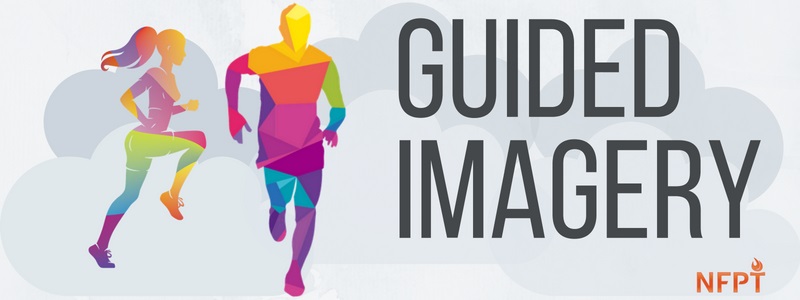
The mind-body connection is well established. Learn how to use guided imagery in individual and group sessions to improve client’s focus and performance.
Mind-body exercise such as yoga, meditation, and guided imagery are options you can work into individual and group sessions to improve clients’ focus and performance.
What is mind-body exercise?
Mind-body exercise is typically characterized by the inclusion of a meditative, proprioceptive, and/or mindfulness element. Classical mind-body exercises include the practice of Taichi, Qigong, Hatha yoga, spiritual dance, and some ancient martial arts.
As mind-body exercise continues to grow in popularity, we see more contemporary practices that include Pilates, somatics, meditation, guided imagery, Feldenkrais, and various forms of yoga.
What is the purpose of mind-body exercise?
The goal of mind-body exercise is to cultivate mental focus and connectedness while executing physical movements. The practice of this type of activity generally includes involves conscious breathwork, a focus on anatomical alignment, and an awareness of the body and the intrinsic flow of energy or “chi”.
Scientific research has long established the health benefits associated with regular physical activity. That said, a more specific body of literature examining mind-body exercise techniques such as yoga, tai chi, meditation, has also revealed positive health outcomes.
Specifically, research has demonstrated the positive influence mind-body exercise has on:
- blood pressure
- baroreflex function
- regression of coronary artery disease
- increased muscular strength
- improved flexibility
- decreased stress
- improved sleep issues associated with insomnia
- decreased HbA1c and C-peptide levels in individuals with type 2 diabetes
- increased balance
These represent only a handful of research-supported and confirmed benefits.
Why Guided Imagery is Relevant for Personal Trainers
Personal trainers work with a variety of clients: professionals to parents to individuals with chronic diseases. However, one element most of our clients have in common is leading a reportedly busy life.
How often do your clients enter a session saying “it’s been a crazy day” or “I have so much going on” or “I feel too stressed”? If your clients are anything like mine, I’m guessing these statements are more the rule than the exception.
When a client enters a training session lacking focus and a defined intention beyond “getting it done”, he or she has a mental roadblock which ultimately impacts physical performance. As personal trainers, we need to help our clients realign their focus and set an intention for the workout.
What Guided Imagery Looks Like in Fitness
There are a variety of ways to accomplish this, but I like to use mind-body principles at the beginning of a workout. One of my favorite go-to methods is guided imagery. It looks like this.
- Ask your client to choose a color or object that represents stress or chaos.
- Once the client has selected the color or object, have him or her say “I release the stress and tension from the day.”
- As your client makes this statement, ask him or her to imagine the color fading or changing to something softer (or the object shifting into a more calming image).
- When the imagery is completed (it may take a couple of times), ask your client to say “I am relaxed, focused and strong. My intention for this workout is….”.
There are hundreds of variations of guided imagery tools and techniques, and it is not something that must be used with every client before every session. However, it is effective if a client has had a particularly stressful day or seems to be frazzled.
Use your judgment and get creative. Talk to your clients about how they are feeling in a whole-person sense – not just physically.
If the mind is clouded or crowded, there isn’t enough clear space to set the focus on the workout and the purpose. Help your clients conquer and quiet their minds to yield even greater performance outcomes.
[info type=”facebook”]Join the conversation on the NFPT Facebook Community Group.[/info]
Dr. Erin Nitschke, NFPT-CPT, NSCA-CPT, ACE Health Coach, Fitness Nutrition Specialist, Therapeutic Exercise Specialist, and Pn1 is a health and human performance college professor, fitness blogger, mother, and passionate fitness professional. She has over 15 years of experience in the fitness industry and college instruction. Erin believes in the power of a holistic approach to healthy living. She loves encouraging her clients and students to develop body harmony by teaching focused skill development and lifestyle balance. Erin is also the Director of Educational Partnerships & Programs for the NFPT. Erin is an editorial author for ACE, IDEA, The Sheridan Press, and the Casper Star Tribune. Visit her personal blog at belivestaywell.com

